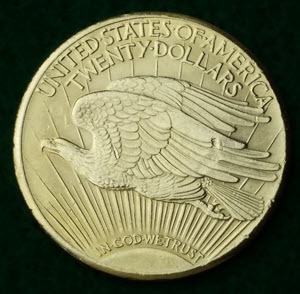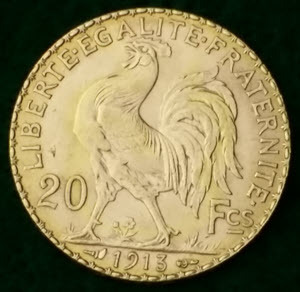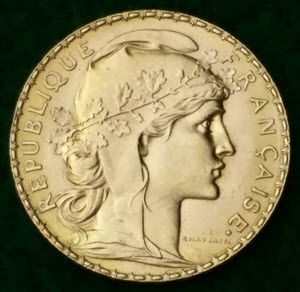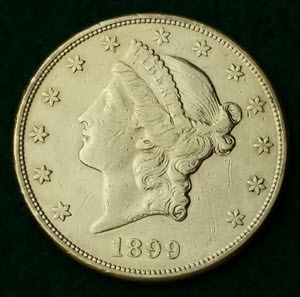How is Gold taxed in an IRA?
As an investor, seeking financial security while lowering your lifetime tax burden is the name of the game. Nowhere is that more important than in your retirement Portfolio – which is why many investors use Individual Retirement Accounts (IRAs) to minimize their tax bill.
But what if you want to invest in an asset like Gold that isn’t permitted in a regular IRA?
That is where self-directed IRAs come into play.

Satori Traders has evaluated the self-directed IRA companies and rated them for their focus on consumer education, BBB rating, customer reviews, and required minimum Investment. Augusta Precious Metals is our top pick for investors with $50,000 or more. Goldco leads the pack for Investments of $25,000 to $50,000 and Birch Gold is best if you are investing less than $25,000.
What is a Gold IRA?
Gold IRAs, also referred to as Precious metal IRAs, are a specialized type of self-directed IRA (SDIRA).
SDIRAs let you use your tax-advantaged retirement savings to purchase and hold a wide range of assets, including:
- Physical Precious metals like Gold and Silver
- Stocks, Bonds, and Mutual funds
- Derivatives like futures and options contracts
- Commodities such as beef, Oil, and Copper
- Cryptocurrencies
- Real Estate

Congress created this Investment vehicle in the 1990s to allow investors greater control of their retirement plans.
SDIRAs share many similarities with regular IRAs. The tax benefits are the same (more on that below) but SDIRAs feature substantial differences, too.
To start with, SDIRAs hand the reins to you – remember, this is a self-directed IRA. You decide which assets you will hold in your SDIRA and you determine when those assets will be bought or sold.
This increased flexibility makes SDIRAs invaluable for securing your financial future by taking advantage of unique opportunities and assets like Gold and Silver.
Before we focus on Gold IRA taxes let’s clarify the IRS rules that will affect your tax-advantaged Investment in physical Precious metals.
You Must Use an Approved Custodian
To open an SDIRA that can hold physical Precious metals, you’ll have to work with a Gold IRA company or Custodian that specializes in administering these unique accounts. The company is responsible for:
- Coordinating with an IRS-approved Custodian (if they aren’t a Custodian themselves)
- Making Investments on your behalf to prevent self-dealing (which is prohibited by the IRS)
- Arranging for proper storage of physical assets
- Performing administrative functions to stay in compliance with IRS regulations

Depending on the Gold IRA company, they may let you choose your own Custodian or choose one for you.
You aren't allowed to hold your physical assets yourself
Unfortunately, the IRS doesn’t allow you to handle or store the physical assets in your Gold IRA. After purchasing your Precious metals, the Custodian will send them to an IRS-approved Depository. The Depository will ensure that your metals are properly stored and insured on your behalf. Whether you can choose your Depository or not depends on which Gold IRA company you choose.
Asset type, purity, and sourcing standards
While Gold IRAs allow you to hold physical Precious metals, there are several limitations that you have to follow.

For starters, you can only hold four physical metals: Gold, Silver, Platinum, and Palladium. Each metal must be in either Coin or bar form and meet specific purity and size standards. For instance, Gold must be at least 99.5% pure, while Silver must be 99.9% pure or higher (an exception is made for American Gold Eagle Coins which are only 91.67% pure).
You are also prohibited from purchasing any assets that are considered “collectibles”, jewelry, or artwork, or any Coins that have been circulated (i.e., Numismatic Coins). Your Gold IRA company and Custodian will ensure that these requirements are met.
Funding restrictions and contribution limits
Even though you will hold Precious metals in your Gold IRA, you aren’t allowed to contribute any metals that you already own. SDIRAs require that you contribute cash to your account, then use the contributed funds to make asset purchases within the account.
Like regular IRAs, SDIRAs have an annual contribution limit of just $6,500 in 2023 ($7,500 if you are over 50). These low contribution limits restrict the amount of Precious metals you can purchase in any given year.

One alternative to this funding restriction is to rollover assets from another Retirement account (such as a regular IRA, eligible 401(k), 457, or TSP) into the Gold IRA. The IRS allows you to perform one rollover transaction during each tax year without paying any taxes or penalties.
How is Gold taxed outside an IRA?
Now that we’ve covered the basic rules, we can dive into the specifics of Gold IRA taxes. But first, let’s look at how Precious metals are taxed outside an IRA as a point of reference.
Outside designated Retirement accounts, the IRS classifies Gold, Silver, and other Precious metals as “collectibles” for tax purposes. Effectively, that means you’ll receive the same tax treatment as you would for investing in paintings or vintage clocks.
Capital gains on collectible assets are automatically taxed at a 28% rate regardless of which tax bracket you are in.
This high tax rate is significant for Precious metals investors – which is why Gold IRAs make such an attractive alternative for long-term investors.
Traditional Gold IRA tax rules
In IRA terminology the term “traditional” is used to describe a tax-deferred account where you invest your pre-tax income and then pay taxes when you withdraw money from the account.

Generally, traditional Gold IRAs are ideal if you expect to be in a lower tax bracket in retirement. By deferring your income and capital gains taxes until later in life, you can lower your overall tax obligation.
Capital gains within a traditional Gold IRA are taxed as regular income based on your tax bracket at the time you take a distribution. For most investors this tax rate will be lower than the 28% rate for collectibles.
Roth Gold IRA tax rules
Roth Gold IRAs, like their regular Roth IRA cousins, allow you to invest after-tax dollars in a tax-exempt Investment vehicle. While that means you will pay income taxes now, a Roth Gold IRA confers huge benefits later.
When you start taking eligible withdrawals from your Roth Gold IRA, you won’t have to pay any taxes – including on your capital gains.
Typically, Roth Gold IRAs are better if you expect to be in a higher tax bracket in retirement. By frontloading your tax bill now, you can lower your overall tax obligation on earned income and capital gains.
Early withdrawal penalties and taxes
It’s important to understand that Gold IRAs, like other tax-advantaged Retirement accounts, don’t allow penalty-free withdrawals unless you satisfy IRS requirements.
With a Roth IRA, you must meet two criteria to make a penalty-free withdrawal:
- Your account must have been open for at least five years (even if you are over 65), and
- You must be at least age 59.5

Traditional IRAs don’t require your account to be open for any length of time but they still carry the age 59.5 rule.
If you withdraw cash or physical metal without meeting these IRS criteria you will be assessed a 10% early withdrawal penalty.
Early withdrawals from a traditional Gold IRA will be treated as regular income at your current tax bracket and you will pay income taxes on the distributed funds. Capital gains will also be treated and taxed as regular income.
Early withdrawals from a Roth Gold IRA are tax-exempt up to the amount you contributed. Capital gains on the account, if they are withdrawn, will be treated and taxed as regular income at your current tax rate.
There are exceptions to the 10% early withdrawal penalty. For example, the penalty is waived if you make a hardship withdrawal or use the funds for eligible expenses like a first-time home purchase or higher education costs.
Required minimum distribution taxes and penalties
The IRS requires that anyone with a traditional Gold IRA starts taking minimum required distributions (RMDs) between ages 70.5 and 73, depending on their birth year. RMDs are the minimum amount you must withdraw so the IRS can start recouping its deferred tax income.

It’s important to keep an eye on your required distribution amounts. Failure to take withdrawals will result in a 50% excise tax on the required amount you did not withdraw during the tax year.
Roth IRAs do not carry RMD requirements.
Bequests

If your Gold IRA still contains assets when you pass away, your beneficiaries will have to carry your remaining tax burden. Most beneficiaries have at least five years to withdraw all the IRA funds under current rules, though that may change based on their age and relationship to the deceased.
Generally, beneficiaries do not have to pay taxes on any inherited Gold IRA assets. They may owe income taxes, however, if they make withdrawals from an inherited Roth Gold IRA before the account is five years old.
Note that the IRS waives the 10% early withdrawal penalty for beneficiaries, even if the original owner dies before age 59.5.
Gold IRA tax rules and your long-term plan
Understanding the Gold IRA tax rules allows you to make informed decisions that impact your current and future tax bills. With this knowledge you’ll be better equipped to make progress toward your retirement goals and build long-term financial security.

If you’re ready to take the next step with your Precious metal IRA, contact one of the companies that offer Gold IRA accounts. They will provide you with an investor kit and answer any questions you have.
At Satori Traders we have researched the Gold IRA companies and identified the top three. If you have $50,000 or more to invest, contact Augusta Precious Metals. For Investments of $25,000 to $50,000, Goldco is your best option. If you are investing less than $25,000 then get in touch with Birch Gold.
About Satori Traders
Hi, my name is Bryan Post and I love the shiny stuff - Silver and Gold.
I've been investing in the Precious metals and mining stocks since 2002 when I realized that Gold is the only real money on the planet.
Here on Satori Traders I share everything I've learned about the metals, Financials markets, trading, Technical analysis, and the numerous games that central banks play with fiat currencies.
https://satoritraders.com/precious-metals/gold/ira/tax-rules/
